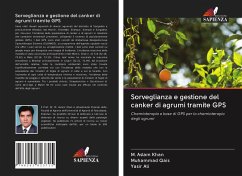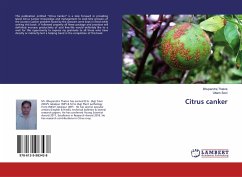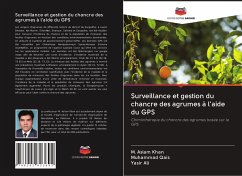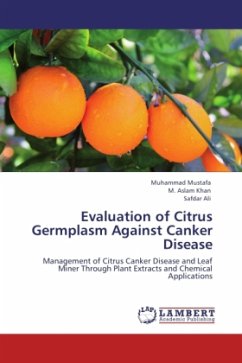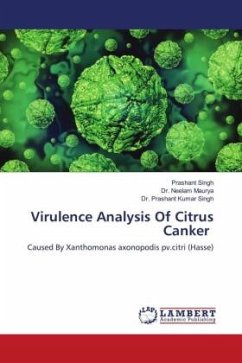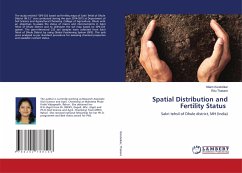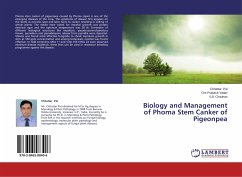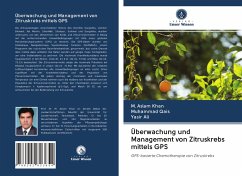
Surveillance and management of citrus canker using GPS
GPS based chemotherapy of citrus canker
Versandkostenfrei!
Versandfertig in 1-2 Wochen
26,99 €
inkl. MwSt.

PAYBACK Punkte
13 °P sammeln!
Citrus orchard of different tehsils of district Sargodha viz. Bhalwal, Kot Momin, SillanWali, Shahpur, Sahiwal and Sargodha were surveyed to measure incidence of canker and citrus leaf miner population in relation to prevailing environmental conditions by using global positioning system (GPS). GPS data was collected from Globalnaya Navigazionnaya Sputunikovaya Sistema (GLONASS) a program of Russian space agency which offer its services on mobile app. The data was uploaded on google maps to draw an incidence map. Maximum disease incidence was observed in Kot Momin mainly, Chak No 21 S.B (32.16,...
Citrus orchard of different tehsils of district Sargodha viz. Bhalwal, Kot Momin, SillanWali, Shahpur, Sahiwal and Sargodha were surveyed to measure incidence of canker and citrus leaf miner population in relation to prevailing environmental conditions by using global positioning system (GPS). GPS data was collected from Globalnaya Navigazionnaya Sputunikovaya Sistema (GLONASS) a program of Russian space agency which offer its services on mobile app. The data was uploaded on google maps to draw an incidence map. Maximum disease incidence was observed in Kot Momin mainly, Chak No 21 S.B (32.16, 73.02) and Mela (32.16, 73.13). Citrus leaf miner showed maximum prevalence at Bhalwal mainly in Lilyani (32.21, 72.94). Except relative humidity, all environmental conditions were found significantly correlated with both disease incidence and citrus leaf miner population at all six localities. With every one unit increase in minimum and maximum temperature, rain and wind speed disease incidence and citrus leaf miner population also increased. Among chemicals, Streptomycine + Copper oxychloride @1+3g/L and Match 50 EC were found most effective in controlling citrus canker.



